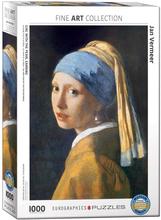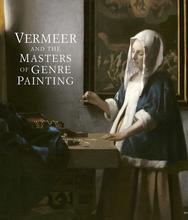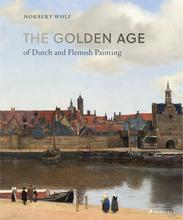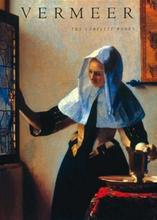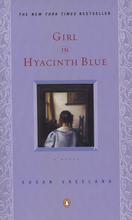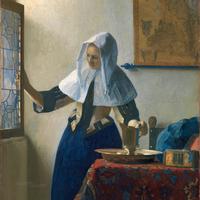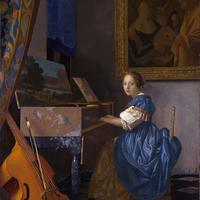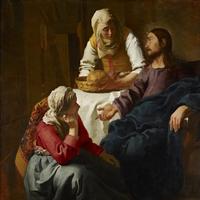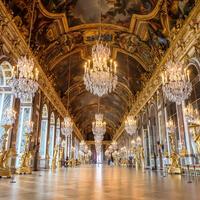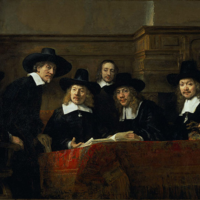More about Johannes Vermeer
- All
- Info
- Shop

Sr. Contributor
Johannes Vermeer: often imitated by criminals, but never duplicated until long after he kicked the bucket.
Vermeer's oeuvre was the subject of a national scandal for the Netherlands. A master forger, name of Van Meergeren, claimed to have discovered painting after painting by Vermeer in a style previously unknown. One such fake, a painting of Jesus revealing himself to his disciples post-Resurrection, was declared Vermeer's greatest masterpiece. The Dutch government bought it up for a fortune to keep it from leaving the country. Woops.
Vermeer's The Astronomer and The Art of Painting were to be the focal points to Hitler's planned Führer Museum. Hitler and Göring got in a bidding war over The Art of Painting, and Hitler paid 1.6 million or so Reichsmarks. Thing is, Göring offered 2 million. Hitler found out about the purchase before money exchanged hands and stopped it, wanting to show Göring that he was the biggest fly in the dump. Göring lost out on another Vermeer deal when he traded 137 authentic paintings for a single Vermeer. A fake, courtesy that crafty bastard Van Meergeren. Van Meergeren only revealed the work he provided Göring was a fake when put on trial for the sale after the war. Either he admitted himself a forger, or he was to be put to death for inking a deal with Nazis.
Only 36 of Vermeer's paintings survive. Vermeer got a high price for his works much of his life. Then the Dutch economy tanked after France invaded in the 1670s. Vermeer's wife described his later life as stressed out and speculated that he died because of his constant worrying about money. His pocketbook was so in the red that his wife had to hide her favorite of his paintings from creditors looking for payment after his death.
His pop culture icon status is only recent, gained since the end of the nineteenth century. No one knows how he learned to paint and he left no students to offer any clues. The water cooler gossip on his technique links Vermeer to the use of some projecting camera obscura- how he achieves his near photorealistic aesthetic. The idea has been pish-poshed out of most academic circles. Still, the legend's so popular that it's presented as fact in books and the movie Girl with a Pearl Earring, featuring Scarlett Johansson in her best Voldemort impression to date.
Full disclosure, a rich nerd in Texas became really invested in the legend and invented a working camera obscura. His efforts are the subject of a documentary called "Tim's Vermeer" funded by his good friends, the magic duo Penn & Teller. It's a story that proves how the human spirit can overcome any obstacle through sheer determination, conviction, and endless monetary resources. For real though, the guy stops his entire life to learn Dutch and basically moves to Delft to "understand" Vermeer's process, clearly bored with his own sad life. And if you're very, very bored with yours, you can find the movie on Netflix.

Contributor
Johannes Vermeer lived in his home town of Delft his entire life.
My parents got married in Delf, and I can tell you that even today it is a very small town. In those days Delft had only 15,000 people, so not enough to fill even one fifth of the average football stadium.
Vermeer was the subject of the 2003 movie "The Girl with a Pearl Earring" starring Colin Firth and Scarlett Johansson. In the movie, Vermeer pierces Scarlett Johansson's ear, which for some reason she finds very arousing.
Vermeer married a catholic girl and then converted to Catholicism himself. In classic Catholic style, she bore him fourteen children! Even with a rich mother in law (in whose house Vermeer and his wife lived) it was hard to support an army of children, especially if you painted very slowly. According to his wife, he died from the stress.
Featured Content
Here is what Wikipedia says about Johannes Vermeer
Johannes Vermeer (/vərˈmɪər, vərˈmɛər/ vər-MEER, vər-MAIR,
Dutch: [joːˈɦɑnəs fərˈmeːr]; see below; also known as Jan Vermeer; October 1632 – 15 December 1675) was a Dutch painter who specialized in domestic interior scenes of middle-class life. He is considered one of the greatest painters of the Dutch Golden Age. During his lifetime, he was a moderately successful provincial genre painter, recognized in Delft and The Hague. He produced relatively few paintings, primarily earning his living as an art dealer. He was not wealthy; at his death, his wife was left in debt.
Vermeer worked slowly and with great care, and frequently used very expensive pigments. He is particularly renowned for making masterful use of light in his work. "Almost all his paintings", Hans Koningsberger wrote, "are apparently set in two smallish rooms in his house in Delft; they show the same furniture and decorations in various arrangements and they often portray the same people, mostly women."
The modest celebrity he enjoyed during his life gave way to obscurity after his death. He was barely mentioned in Arnold Houbraken's major source book on 17th-century Dutch painting (Grand Theatre of Dutch Painters and Women Artists, published 1718) and, as a result, was omitted from subsequent surveys of Dutch art for nearly two centuries. In the 19th century, Vermeer was rediscovered by Gustav Friedrich Waagen and Théophile Thoré-Bürger, who published an essay attributing 66 works to him, although only 34 paintings are universally attributed to him today. Since that time, Vermeer's reputation has grown enormously.
Check out the full Wikipedia article about Johannes Vermeer


